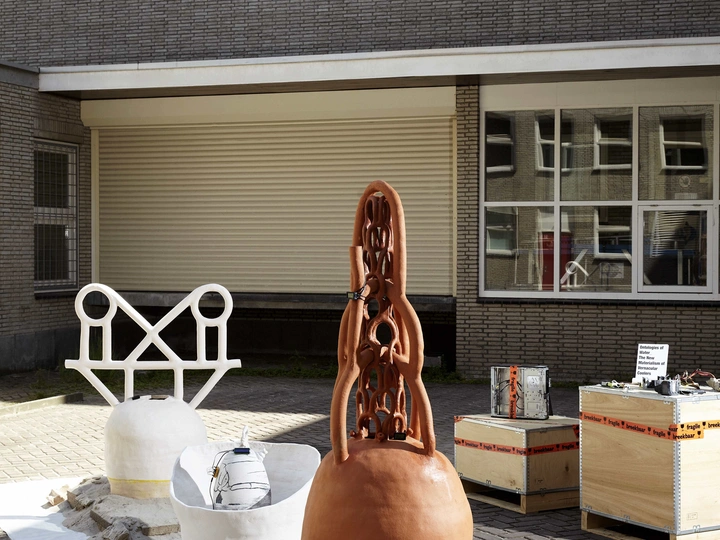Heritage Tech

Claudia Paredes is a designer, visual artist and researcher who lives and works between Madrid and Eindhoven. Between 2018 and 2020, Claudia co-curated the Mujer, Objeto platform, which aims to give greater visibility to women within the field of contemporary design with two exhibitions - Mujer, Objeto (2018) and Mujer Florero - DIMAD, Madrid (2019). In 2020, Paredes was part of Mayrit Biennial, co-curating the exhibition Liminal Encounters. In 2021, she started working with gender from a trans-species perspective, within GEO DESIGN-Design Academy Eindhoven, Ocean Uni - TB21 and with Angela Rui. Paredes created a piece with cyborg artist Manel De Aguas for a cycle within the AQUARIA exhibition at MAAT Lisbon. In 2022 she curated a sound and visual piece with Manel de Aguas, Noa Jansma and the choreographer and dancer from the Centro Nacional de Danza, Mar Aguiló, for the Madrid Design Festival and La Fabrica. As part of the GEO DESIGN programme, directed by Formafantasma, her audiovisual work was included in the Milan Film Design Festival, 2021. Claudia Paredes studied at ETSA Madrid, Central Saint Martins and Design Academy Eindhoven. Her work as a designer began at Domaine de Boisbuchet, a partner of the Vitra campus, in 2015. Since 2012 she has worked on bioclimatic architecture in Morocco, Australia, France and New Zealand. With her graduation project - “Neo Coolers” - she completed her work developed at the European Ceramic Workcentre in Oisterwijk, in which she links the cooling properties of clay with data centres in desert lands. Paredes' work investigates geopolitical contrasts related to water scarcity and pervasive technological expansion. In 2023 she has collaborated with Marina Otero Verzier in her project Future Storage within an exhibition for Tabakalera Donosti called Computational Compost. Right now she is doing a collaboration with TBA21 and ARQVA museum in Cartagena (National Subacuatic Archeology Museum).
Central to my work as a ceramist geo designer are themes of sustainability, cultural identity, and community engagement. These themes are of utmost
importance as they reflect my deeply held belief in responsible stewardship
of the environment, preservation of cultural heritage, and fostering inclusive
urban development. Sustainability serves as a guiding principle, driving me to explore innovative ways to integrate ceramic materials into the creation of new ecosystems with water, sun, and living organisms.
Cultural identity is another key theme, as I seek to celebrate and honor the
diverse traditions and narratives embedded within the Spanish ceramic
heritage I work with. By incorporating locally sourced materials and collaborating with artisans and community members, I aim to create designs that resonate with the cultural identity of the place where the geo injustice is placed. Community engagement is integral to my practice, as I believe that meaningful collaboration with stakeholders is essential for creating designs that truly
reflect the needs and aspirations of the people they serve. For example, in
Donosti Physic Centre they needed a composting machine to fertilize soil
for the urban gardens of San Sebastian.
In the coming year as a ceramist geo designer specializing in the creation of
traditional archetypical Spanish aerial granaries to host data centers, my
focus is on advancing both the technical and conceptual aspects of this
unique fusion of heritage preservation and modern technology. My
development goals include honing my skills in integrating state-of-the-art
data center infrastructure within the architectural framework of aerial
granaries, ensuring seamless functionality while respecting the historical
significance and cultural integrity of these structures.